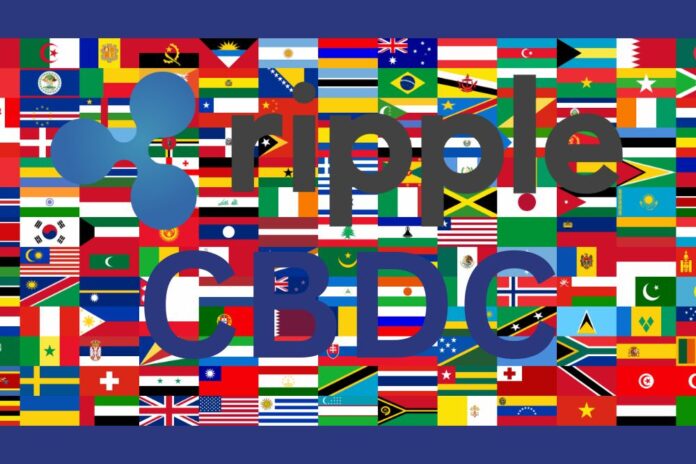Despite facing legal challenges from the Securities and Exchange Commission (SEC), Ripple is forging ahead in the Central Bank Digital Currency (CBDC) landscape.
In a recent clip from an interview shared on X, Ripple CEO Brad Garlinghouse revealed that the company has secured partnerships with ten governments to leverage Ripple’s blockchain technology for their CBDC initiatives.
Read Also: Ripple Officially Unveils Its Stablecoin Name, States Launch Timeline
This strategic move positions Ripple as a key player in shaping the future of digital central banking systems, to enhance global financial security and efficiency.
Ripple’s robust blockchain platform forms the foundation of these collaborations. By implementing Ripple’s solutions, these ten nations aim to streamline cross-border transactions, bolster financial transparency, and optimize the overall operational efficiency of their financial sectors.
This initiative reflects a broader trend of financial institutions worldwide embracing digitalization to achieve faster and more secure transaction mechanisms.
Ripple’s Expanding Global Reach
A recent example of Ripple’s growing global influence is its collaboration with the National Bank of Georgia to spearhead its digital economic initiatives. Furthermore, Ripple boasts partnerships with many Japanese banks for blockchain payment solutions.
The company’s active involvement in CBDC pilot programs in countries like Colombia, Bhutan, Palau, and Montenegro further underscores its comprehensive approach to global digital transformation within central banking.
Looking beyond CBDC development, Ripple is venturing into the stablecoin market with the introduction of Ripple USD (RLUSD), unveiled at the XRPL Apex Summit.
This stablecoin initiative is more significant because Garlinghouse pointed out that a CBDC and a stablecoin are essentially the same. The difference, according to Garlinghouse, is the issuer. Stablecoins and CBDCs are pegged to an existing asset, to facilitate faster and cheaper transactions using the stablecoin.
Notably, RLUSD will be available on the XRP Ledger and Ethereum (ETH) blockchains, facilitating wider adoption across various platforms. This dual availability is expected to attract a broader user base, encompassing blockchain enthusiasts and financial professionals seeking dependable digital transaction options.
We are on twitter, follow us to connect with us :- @TimesTabloid1
— TimesTabloid (@TimesTabloid1) July 15, 2023
Read Also: Ripple’s Choice Name For Underway Stablecoin Emerges, XRP Army Reacts
XRP and RLUSD on the XRPL
Ripple Chief Technology Officer (CTO) David Schwartz has also explained the roles of XRP and RLUSD on XRPL, and he emphasized that the stablecoin would not diminish XRP’s role in the ecosystem.
This strategic launch positions Ripple to capture a larger market share, potentially attracting new demographics while solidifying its standing within the existing blockchain community.
Follow us on Twitter, Facebook, Telegram, and Google News


